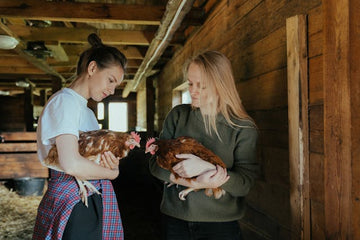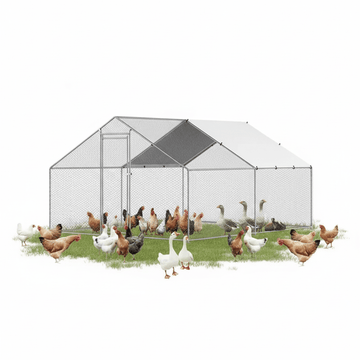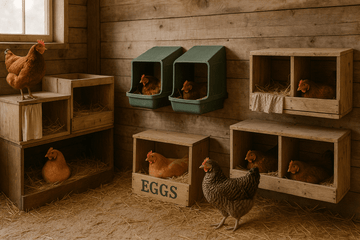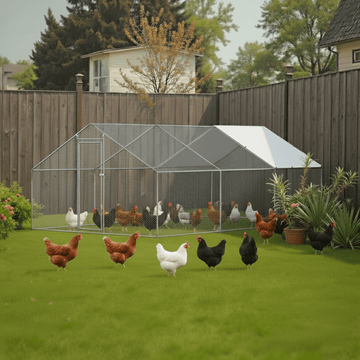Introduction to Chicken Dust Baths
Dust baths are an essential part of a chicken's life, offering numerous benefits beyond just cleanliness. This natural behavior, where chickens bathe themselves in dirt, helps them maintain their skin and feather health, and even plays a crucial role in pest control. Understanding why and how chickens take dust baths can enhance the well-being of your backyard flock and make for happier, healthier chickens.
Why Do Chickens Take Dust Baths?
Chickens instinctively engage in dust bathing to remove parasites, such as lice and mites, and to maintain their plumage in optimal condition. The dust helps absorb excess oil, moisture, and provides a medium for the chickens to rid themselves of pests.
The Science Behind Dust Bathing
Dust bathing is not merely a physical activity but a complex behavior driven by a chicken's biological needs. It involves a series of movements that help distribute the dust through their feathers, reaching the skin and undercoat to maximize its benefits.
How to Provide the Perfect Dust Bath
Choosing the Right Location
The location of a dust bath is crucial for your chickens' comfort and usage. It should be in a dry, sunny spot in your chicken coop where the dirt can remain loose and accessible year-round.
Ideal Dust Bath Mix
While natural dirt works fine, adding diatomaceous earth, sand, and wood ash can enhance the dust bath's effectiveness against pests and improve the health of your chickens' skin and feathers.
Maintaining Your Chicken's Dust Bath
Regular maintenance, such as stirring the mix and adding fresh materials, ensures the dust bath remains attractive and useful to your chickens.
Benefits of Dust Baths for Chickens
Pest Control
Dust baths are a chicken's first line of defense against external parasites, effectively reducing the need for chemical treatments.
Skin and Feather Health
The dusting process helps in exfoliating dead skin and removing old feathers, promoting new growth and healthier skin.
Behavioral Benefits
Dust bathing is also a social activity that helps reduce stress and aggressive behaviors among the flock.
Common Problems and Solutions
Too Wet or Dry Conditions
Adjusting the cover or adding moisture-absorbing materials can help maintain the ideal dust bath conditions.
Limited Space Solutions
Even in small spaces, portable or hanging dust baths can provide the necessary bathing opportunities for your chickens.
DIY Dust Bath Ideas for Your Flock
Simple DIY Dust Bath
A basic dust bath can be created using a shallow box filled with a mix of sand, soil, and wood ash, easily placed anywhere in your yard or coop.
Creative Solutions for Any Space
From upcycled furniture to garden planters, almost any container can be transformed into an effective dust bath with a bit of creativity.
Conclusion
Embracing the natural instincts of your chickens by providing them with a proper dust bath setup is key to their health and happiness. This simple yet effective practice supports their well-being in numerous ways, making it an essential aspect of chicken care.
FAQs
-
Why is my chicken not using the dust bath?
- Chickens may avoid a dust bath if it's in an undesirable location, too wet or dry, or if they feel unsafe. Observing your chickens' behavior and adjusting the setup accordingly can help.
-
Can I use just sand for the dust bath?
- While sand can be used alone, mixing it with other materials like soil and wood ash provides a more effective medium for dust bathing.
-
How often should I change the dust bath mix?
- The mix should be changed or replenished whenever it becomes compacted, dirty, or wet to ensure its effectiveness and attractiveness to your chickens.
-
Can dust baths prevent all types of chicken parasites?
- Dust baths are effective against many external parasites but may not prevent all types. Regular health checks and additional treatments might be necessary for severe infestations.
-
Do all chicken breeds enjoy dust baths?
- Yes, dust bathing is a natural behavior exhibited by all chicken breeds, although the frequency and duration can vary among individuals.





